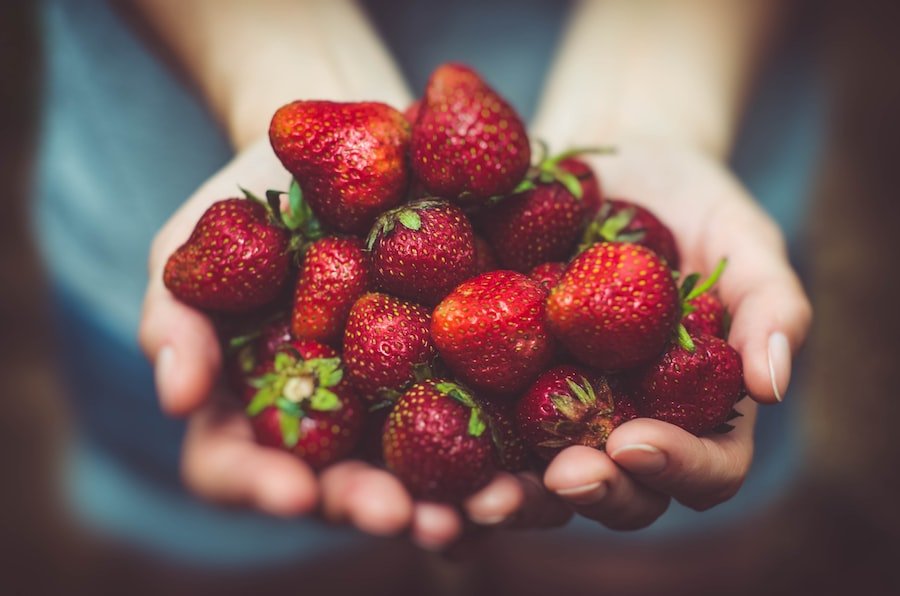Food holds a significant place in Chinese culture. It is not just a means of sustenance, but also a way to connect with others, express hospitality, and celebrate special occasions. Chinese cuisine is known for its diverse flavors, unique cooking techniques, and emphasis on fresh ingredients. To fully appreciate and enjoy authentic Chinese cuisine, it is essential to have a good understanding of food-related vocabulary.
Knowing food-related vocabulary is crucial when ordering food in Chinese restaurants. It allows you to communicate your preferences and dietary restrictions effectively, ensuring that you have an enjoyable dining experience. Additionally, understanding the different types of dishes and menu categories in Chinese cuisine helps you navigate through the menu and choose dishes that suit your taste.
Table of Contents
ToggleKey Takeaways
- Understanding food-related vocabulary is crucial for enjoying Chinese cuisine
- Basic vocabulary for ordering food includes phrases like “I want” and “please bring me”
- Knowing menu categories and dish types can help navigate a Chinese menu
- Essential vocabulary for dim sum includes names of popular dishes and types of dumplings
- Ordering Chinese tea and beverages requires knowledge of specific types and preparation methods
Basic Vocabulary for Ordering Food in Chinese Restaurants
When dining in a Chinese restaurant, it is helpful to know some basic phrases for ordering food. Common phrases include “请给我” (qǐng gěi wǒ), which means “please give me,” and “我要” (wǒ yào), which means “I want.” These phrases can be followed by the name of the dish you want to order.
It is also important to know vocabulary for specifying dietary restrictions and preferences. For example, if you are vegetarian, you can say “我是素食者” (wǒ shì sù shí zhě), which means “I am a vegetarian.” If you have any allergies or intolerances, it is helpful to know how to say the specific ingredient you need to avoid.
Understanding Chinese Menu Categories and Dish Types
Chinese menus are often organized into different categories, each representing a specific type of dish. Some common menu categories include appetizers, soups, stir-fries, noodles, rice dishes, and desserts. Understanding these categories helps you navigate through the menu and find dishes that you would like to try.
Within each category, there are different types of dishes. For example, in the stir-fry category, you may find dishes like Kung Pao Chicken, Mapo Tofu, or Sweet and Sour Pork. Each dish has its own unique combination of ingredients and flavors. Knowing the vocabulary for different types of dishes helps you understand what to expect when ordering.
Essential Vocabulary for Navigating a Dim Sum Menu
| Category | Term | Definition |
|---|---|---|
| Food | Har Gow | Steamed shrimp dumplings |
| Food | Siu Mai | Steamed pork and shrimp dumplings |
| Food | Char Siu Bao | Steamed barbecue pork buns |
| Food | Xiao Long Bao | Soup dumplings filled with pork and broth |
| Food | Lo Mai Gai | Sticky rice wrapped in lotus leaf with chicken and mushrooms |
| Food | Chow Fun | Wide rice noodles stir-fried with meat and vegetables |
| Drink | Jasmine Tea | Light and fragrant tea often served with dim sum |
| Utensil | Chopsticks | Traditional utensil used to eat dim sum |
| Utensil | Teapot | Small pot used to serve hot tea |
Dim sum is a popular style of Chinese cuisine that consists of small, bite-sized portions of food served in steamer baskets or on small plates. It is often enjoyed during brunch or lunchtime and is typically served with Chinese tea. To fully enjoy a dim sum experience, it is helpful to know the vocabulary for common dim sum dishes and ingredients.
Some common dim sum dishes include dumplings (such as siu mai and har gow), steamed buns (such as char siu bao), rice rolls (such as cheung fun), and egg tarts. Each dish has its own unique filling or flavor profile. Knowing the vocabulary for these dishes helps you choose the ones you would like to try.
Vocabulary for Ordering Chinese Tea and Beverages
Chinese tea is an integral part of Chinese culture and is often enjoyed alongside meals. There are various types of Chinese teas, each with its own unique flavor and health benefits. Some popular Chinese teas include green tea, oolong tea, black tea, and pu-erh tea.
When ordering tea in a Chinese restaurant, it is helpful to know the vocabulary for different types of tea. For example, if you want to order green tea, you can say “请给我一杯绿茶” (qǐng gěi wǒ yī bēi lǜ chá), which means “please give me a cup of green tea.” Additionally, knowing how to describe the taste and aroma of tea can enhance your tea-drinking experience.
Exploring the World of Chinese Noodles and Dumplings

Chinese cuisine is famous for its wide variety of noodles and dumplings. Noodles come in different shapes, sizes, and textures, and can be served in soups or stir-fried. Some popular Chinese noodle dishes include chow mein, lo mein, and dan dan noodles.
Dumplings, on the other hand, are small parcels of dough filled with various ingredients. They can be steamed, boiled, or pan-fried. Some common types of dumplings include potstickers, xiao long bao (soup dumplings), and jiaozi. Knowing the vocabulary for different types of noodles and dumplings helps you choose dishes that suit your preferences.
Understanding Chinese Sauces and Seasonings
Chinese cuisine is known for its flavorful sauces and seasonings. Some common Chinese sauces include soy sauce, oyster sauce, hoisin sauce, and black bean sauce. Each sauce has its own unique flavor profile and is used to enhance the taste of dishes.
When ordering food in a Chinese restaurant, it is helpful to know how to describe and order dishes with specific sauces and seasonings. For example, if you want to order a dish with black bean sauce, you can say “请给我一份豆豉酱牛肉” (qǐng gěi wǒ yī fèn dòu chǐ jiàng niú ròu), which means “please give me a serving of beef with black bean sauce.”
Vocabulary for Describing Flavors and Textures in Chinese Cuisine
Flavor and texture play a crucial role in Chinese cuisine. Chinese dishes often combine a balance of flavors such as sweet, sour, salty, and spicy. Additionally, Chinese cuisine is known for its emphasis on different textures, such as crispy, tender, chewy, and silky.
Knowing the vocabulary for describing flavors and textures helps you communicate your preferences and understand the characteristics of different dishes. For example, if you prefer spicy food, you can say “我喜欢辣的食物” (wǒ xǐ huān là de shí wù), which means “I like spicy food.”
Exploring Regional Chinese Cuisine: Vocabulary for Ordering Specialties
China is a vast country with diverse regional cuisines. Each region has its own unique specialties and flavors. Some popular regional cuisines include Sichuan cuisine, Cantonese cuisine, Shanghainese cuisine, and Hunan cuisine.
When dining in a Chinese restaurant that specializes in a particular regional cuisine, it is helpful to know the vocabulary for ordering and describing dishes from that region. For example, if you are dining in a Sichuan restaurant, you can ask for recommendations by saying “请给我推荐一道四川特色菜” (qǐng gěi wǒ tuī jiàn yī dào sì chuān tè sè cài), which means “please recommend a Sichuan specialty dish.”
Tips for Improving Your Chinese Food Vocabulary and Enjoying Authentic Cuisine
To improve your Chinese food vocabulary, it is helpful to practice regularly. You can start by learning common food-related words and phrases and then gradually expand your vocabulary. Watching cooking shows or videos in Chinese can also help you familiarize yourself with different ingredients and cooking techniques.
When trying new dishes or exploring different types of Chinese cuisine, it is important to keep an open mind and be willing to step out of your comfort zone. Trying new flavors and textures can be a rewarding experience and can help you appreciate the diversity of Chinese cuisine.
In conclusion, having a good understanding of food-related vocabulary is essential for ordering and enjoying authentic Chinese cuisine. It allows you to communicate your preferences, navigate through menus, and appreciate the unique flavors and textures of Chinese dishes. By expanding your Chinese food vocabulary, you can enhance your dining experiences and deepen your appreciation for Chinese culture.








